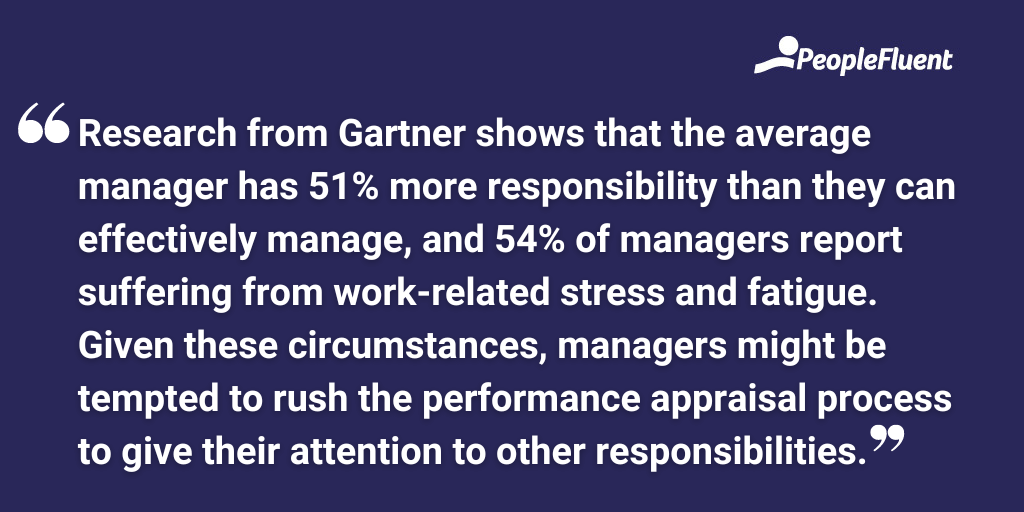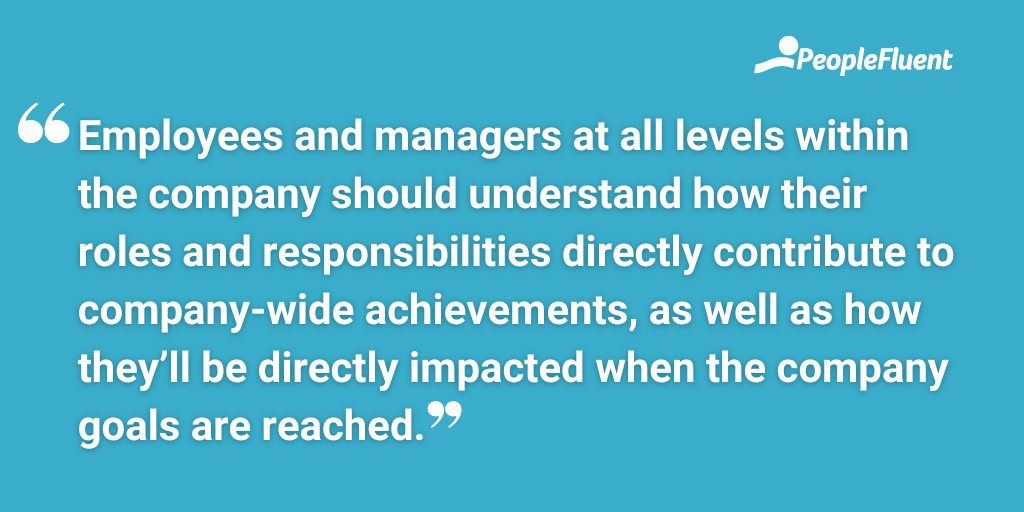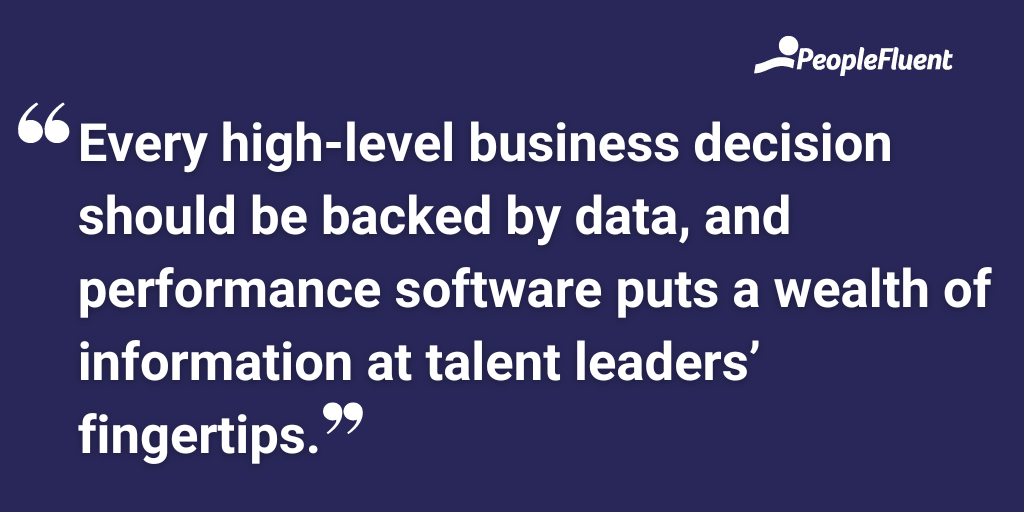Published: Feb 21, 2024Time to read: 6mins Category: Talent Management
Start with Strategy: How Effective Planning Can Transform the Performance Appraisal Process
Annual performance appraisals play an important role in achieving long-term success. In this blog post, learn how an effective performance strategy helps both employers and employees get the most out of annual reviews.
Employees who get unequivocally excited about performance reviews might be few and far between, but these appraisals are an opportunity for workers to set career goals and explore growth opportunities. Appraisals are also often tied to decisions about merit-based compensation increases, so standards need to be in place to ensure fair assessments are made for each worker.
In addition to this individual impact on employees, performance appraisals also give companies valuable insights that are used to make strategic business decisions. Performance review data helps companies:
- Evaluate employee productivity
- Understand how engaged workers are with their roles
- Determine the top skills that exist within their organization
- Identify the competencies that need to be further developed for organizational success
Talent management leaders must design and deploy performance appraisals that give organizations essential people and skills data while encouraging employees to strive for continuous improvement. To do this, HR leaders need to have an effective planning process that considers both the employee experience and business needs.

READ MORE | ‘How Performance Software Can Transform Your Employee Skills and Competency Management’
Best Practices for Performance Appraisal Design
Before the official review period begins, managers need to clearly define performance standards for their employees. Departments will have different expectations depending on their job functions and responsibilities within the organization, but all managers need to ensure that their subordinates understand the key performance indicators (KPIs) of their roles and how to achieve success. If employees don’t know how their performance will be measured, then they can’t reasonably be expected to meet or exceed performance expectations when it comes time for their annual review.
Talent leaders need to have systems in place that support managers in communicating expectations to their employees. It’s also essential that managers have the time they need to complete meaningful reviews for each worker. Research from Gartner shows that the average manager has 51% more responsibility than they can effectively manage, and 54% of managers report suffering from work-related stress and fatigue. Given these circumstances, managers might be tempted to rush the performance appraisal process to give their attention to other responsibilities. Unfortunately, this comes at the expense of employees and can leave them feeling like the review process holds little value.
When designing performance appraisals, talent leaders need to consider the overall impact that reviews will have on employee motivation and development. Negative feedback can lead to feelings of doubt and inadequacy, and possibly further reduce performance. On the other hand, positive reviews with little to no feedback likely won’t motivate employees to continue to develop and grow their competencies and skills. It’s more likely that they’ll start to feel complacent and stagnate their growth.
Organizations can mitigate these outcomes by implementing strategic review processes designed to help employees take a more active role in their performance discussions. Employees need time to self-reflect on their performance, have meaningful conversations with their supervisors, and take an active part in creating their own development goals relevant to their professional aspirations. Talent leaders need to design appraisal processes that give workers and managers adequate time for meaningful reflection, discussion, and goal-setting.

KEEP READING ABOUT TALENT MANAGEMENT | ‘4 Hidden Pitfalls of an All-in-One HR Solution’
Align Performance Appraisals With Organizational Goals
In addition to assessing employee performance, the appraisal process has broader implications for achieving organizational goals. Once talent leaders have employee performance data, they need to use the information to assess the effectiveness of organizational strategies and initiatives. Determining which employees are generally performing above, at, or below expectations helps leaders identify and understand which initiatives are succeeding and where improvements need to be made.
Perhaps there are performance discrepancies between certain diverse groups, or maybe some departments are exceeding expectations compared to others. Whatever the case might be, organizations need to leverage performance appraisal data to make strategic decisions geared toward achieving business objectives.
Making these data-backed decisions requires aligning performance appraisals directly with organizational objectives and communicating those goals from the top down. Clear, consistent messaging about what the company’s goals are and the steps required to achieve those objectives is essential. Employees and managers at all levels within the company should understand how their roles and responsibilities directly contribute to company-wide achievements, as well as how they’ll be directly impacted when the company goals are reached.
When it comes to designing the appraisal process, talent leaders must consider how employees can align their professional goals with those of the organization. Performance appraisal designers should include messaging within self-reflection and collaboration processes prompting employees to consider how their efforts and aspirations contribute to achieving both their personal goals and company objectives. Talent leaders should also consider how employee coaching opportunities can be used to communicate organizational objectives and help workers improve their performance.
Internal Mobility and Career Pathing
Strategic planning and execution can also help organizations sustain their talent pipelines and assist employees with career advancement. The appraisal process is an opportunity to discover which employees could benefit from developing specific skills and competencies. It’s also a helpful tool for understanding which employees might be lacking motivation. In either case, the data from talent management software helps organizational leaders determine where to place employees to optimize their performance.
Leaders can support ambitious employees who need further skills development by implementing coaching strategies, offering opportunities for more hands-on involvement in specific projects, and providing a greater number of professional learning opportunities. Leaders can track these workers’ development and leverage succession planning software to place them on appropriate career paths.
Conversely, employees with strong skill sets who lack motivation might find more success in an alternate role. Instead of potentially losing unmotivated employees to competitors, organizations can use talent management software to identify internal positions better suited to those workers’ professional ambitions.

Translate Performance Data Into Strategic Action
The right talent management software will arm CHROs and other people leaders with the data they need to make strategic decisions that achieve organizational goals. Performance appraisals help leaders understand who the high performers are and what motivates top talent. This data can (and should) be leveraged to make better-informed choices about where to deploy skills within the organization to yield the best possible results.
Additionally, understanding employee motivations will help leaders design initiatives that appeal to workers and encourage high performance. Every high-level business decision should be backed by data, and performance software puts a wealth of information at talent leaders’ fingertips. Leaders who take the time to strategically plan and execute performance reviews will be better able to understand their employees’ perspectives and use that information to encourage continuous growth, not only for their workers but for the organization as a whole.
Master Talent Management
Want more tips for optimizing employee performance? Download our ebook, ‘Mastering Talent: Leveraging Technology to Transform Your Performance Strategy and Drive Employee Engagement,’ or request a PeopleFluent demo today to see our performance software in action.